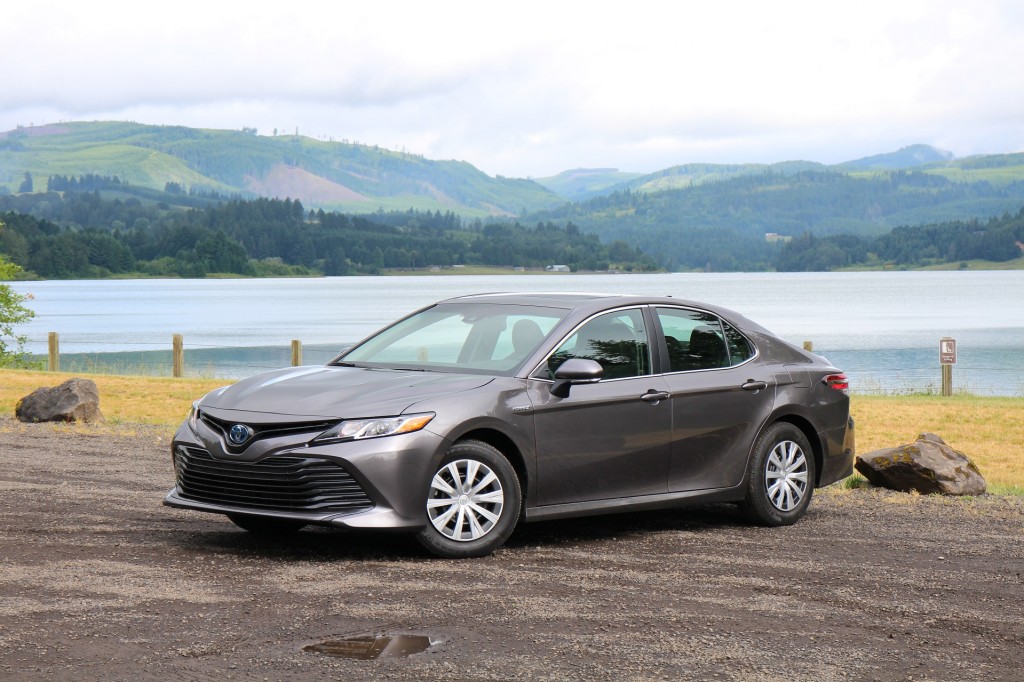Cars with plugs may be the cleaner and greener future, but at the moment, they make up only about 1 percent of global sales approaching 100 million vehicles a year.
That means that automakers continue to work ceaselessly on more efficient gasoline engines and lighter vehicles to put them in.
Last week, Toyota summarized its plans in that arena and revealed some of the future powertrains we'll see in Toyota and Lexus vehicles over the next several years.
DON'T MISS: Toyota Prius hybrid sales have tanked: here are 4 reasons why
The new engines, transmissions, and hybrid systems are all considered part of the Toyota New Global Architecture, a set of common underpinnings for dozens of current and future vehicles.
TNGA vehicles started with the 2016 Toyota Prius, and include the 2017 Toyota C-HR (nee Scion) hatchback, and the 2018 Camry mid-size sedan.
Among the announcements was a next-generation 2.0-liter hybrid powertrain, a larger engine than the 1.8-liter Atkinson cycle inline-4 used in the fourth-generation Prius that launched for 2016.

Toyota New Generation Architecture (TNGA) powertrain details, Mar 2018

Toyota New Generation Architecture (TNGA) powertrain details, Mar 2018

Toyota New Generation Architecture (TNGA) powertrain details, Mar 2018
The new and more powerful hybrid system employs "the same size-reducing, weight-reducing, and loss-reducing technologies used in the fourth-generation Prius," Toyota says.
Significantly, new control software reduces engine speed as the electric motor's output increases, which the company says delivers "a linear and lengthened sense of acceleration."
A larger number of nickel-metal-hydride battery cells (180 vs 168 previously), operating at a higher voltage (216.0 volts vs 201.6 volts previously), are used in the car's battery pack, which Toyota says is more compact than previous packs.
CHECK OUT: 2017 Toyota Prius Prime: first drive of new plug-in hybrid
Overall, the new hybrid system is more efficient, more compact, more integrated, and hence delivers better fuel economy.
There's also a new 2.0-liter "Dynamic Force" engine intended for non-hybrid uses that boosts thermal efficiency by cutting energy lost to the exhaust and cooling systems, lower internal friction, and other improvements.
Toyota says the new engine can achieve a thermal efficiency of 40 percent under some operating circumstances, which is effectively the equal of modern diesel efficiency.

2018 Toyota Camry Hybrid LE, Willamette Valley, Oregon, June 2017
Two new transmissions are included in the portfolio of future powertrain technologies. One is a new 6-speed manual gearbox that Toyota says is one of the world's smallest and lightest units of its type.
The company has included rev-matching software so the engine is automatically sped up or slowed down to match that of the new gear, leading to smoother gear changes.
The second is an updated version of the continuously variable transmission Toyota has used in small cars for several years.
READ THIS: Toyota Prius V hybrid wagon ends U.S. run; RAV4 Hybrid took its sales
The new CVT adds a launch gear, which gives better acceleration and eliminates the sluggish feel when accelerating away from a stop, overcoming the CVT's poor belt efficiency at low ratios.
That in turn allows a wider ratio at higher speeds, lowering engine revs and giving the new Toyota CVT a ratio of 7.5 to 1 between top and bottom ratios, which it says is class-leading among CVTs for 2.0-liter engines.
Finally, two updated all-wheel drive systems permit greater torque vectoring for improved traction. The E-Four AWD system boosts power to the rear wheels by 30 percent over the previous version, the company says, and will be used on a variety of future hybrid models.













